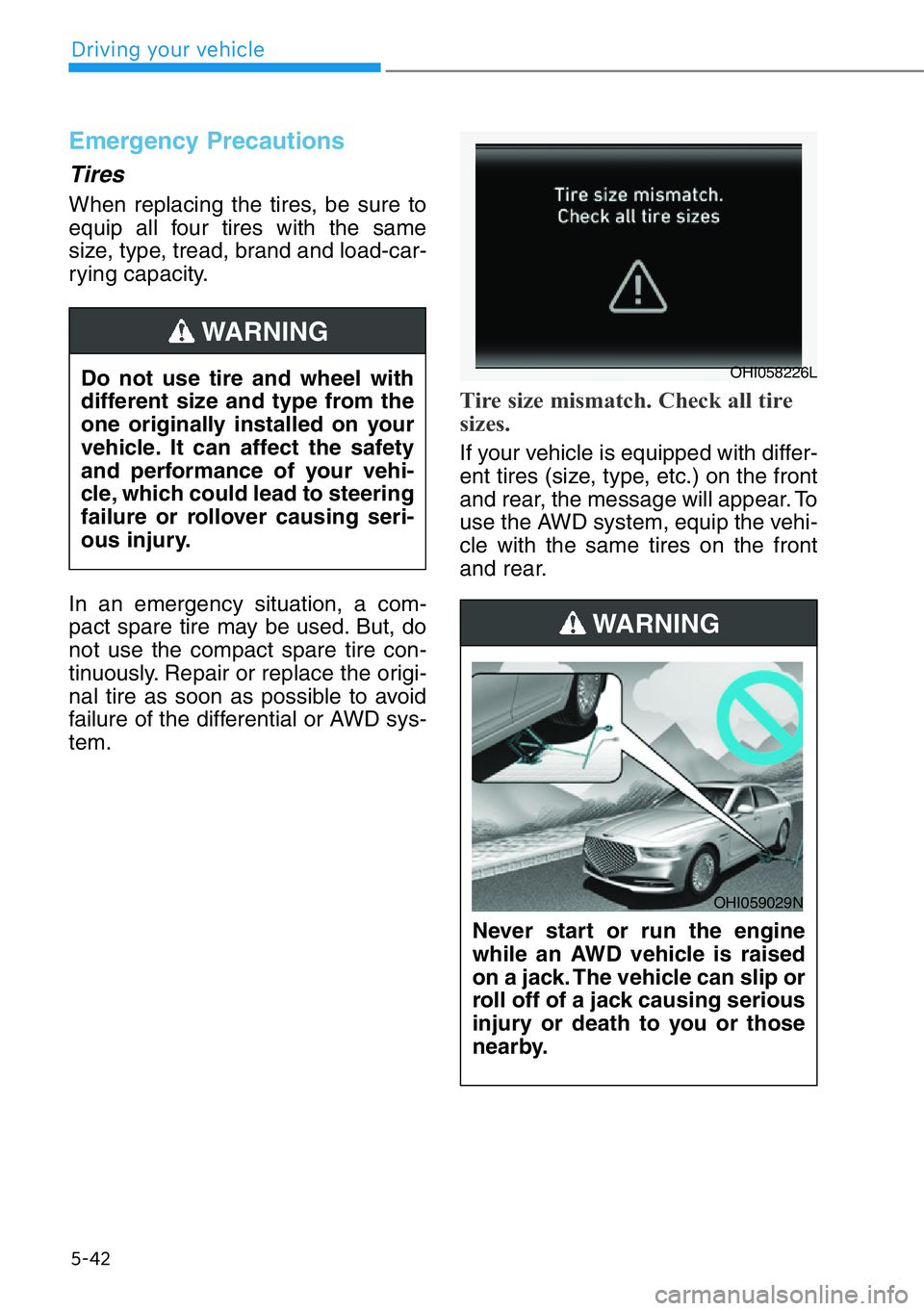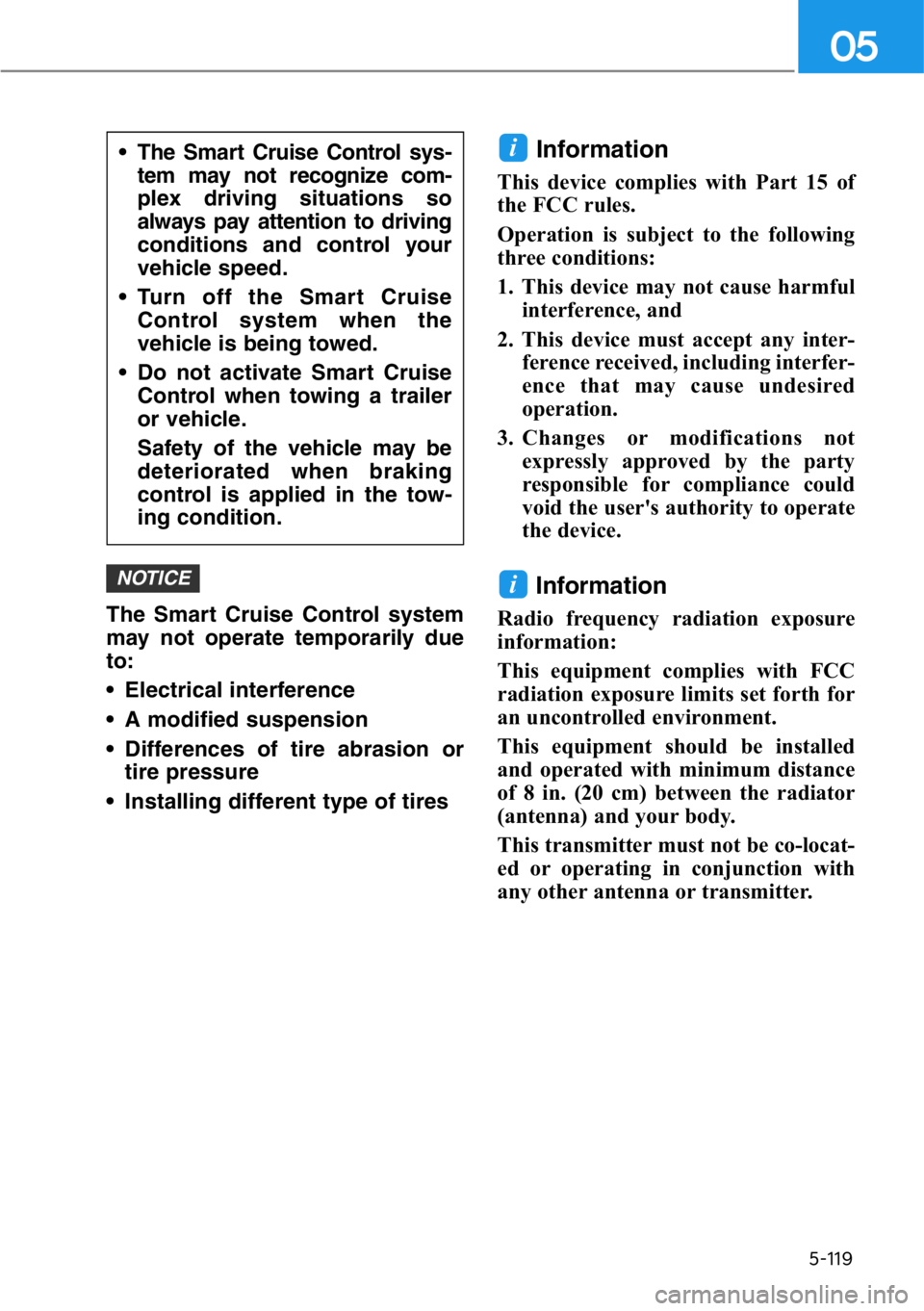tire type GENESIS G90 2021 Owner's Manual
[x] Cancel search | Manufacturer: GENESIS, Model Year: 2021, Model line: G90, Model: GENESIS G90 2021Pages: 538, PDF Size: 13.02 MB
Page 67 of 538

2-47
02
Selecting a Child Restraint
System (CRS)
When selecting a CRS for your child,
always:
• Make sure the CRS has a label
certifying that it meets applicable
Federal Motor Vehicle Safety
Standards (FMVSS 213).
• Select a child restraint based on
your child's height and weight. The
required label or the instructions
for use typically provide this infor-
mation.
• Select a child restraint that fits the
vehicle seating position where it
will be used.
• Read and comply with the warn-
ings and instructions for installation
and use provided with the child
restraint system.
Child restraint system types
There are three main types of child
restraint systems: rearward-facing
seats, forward-facing seats, and
booster seats. They are classified
according to the child’s age, height
and weight.
Rearward-facing child restraints
An improperly secured child
restraint can increase the risk
of SERIOUS INJURY or DEATH
in an accident. Always take the
following precautions when
using a child restraint system:
• NEVER install a child or infant
restraint in the front passen-
ger's seat.
• Always properly secure the
child restraint to a rear seat of
the vehicle.
• Always follow the child
restraint system manufactur-
er's instructions for installa-
tion and use.
• Always properly restrain your
child in the child restraint.
• If the vehicle head restraint
prevents proper installation of
a child seat (as described in
the child restraint system
manual), the head restraint of
the respective seating posi-
tion shall be readjusted or
entirely removed.
• Do not use an infant carrier or
a child safety seat that
"hooks" over a seatback, it
may not provide adequate
protection in an accident.
• After an accident, have retail-
er of Genesis Branded prod-
ucts check the child restraint
system, seat belts, tether
anchors and lower anchors.
WARNING
NEVER install a child or infant
restraint in the front passen-
ger's seat.
Placing a rearward-facing child
restraint in the front seat can
result in SERIOUS INJURY or
DEATH if the child restraint is
struck by an inflating air bag.
WARNING
Page 294 of 538

Emergency Precautions
Tires
When replacing the tires, be sure to
equip all four tires with the same
size, type, tread, brand and load-car-
rying capacity.
In an emergency situation, a com-
pact spare tire may be used. But, do
not use the compact spare tire con-
tinuously. Repair or replace the origi-
nal tire as soon as possible to avoid
failure of the differential or AWD sys-
tem.
Tire size mismatch. Check all tire
sizes.
If your vehicle is equipped with differ-
ent tires (size, type, etc.) on the front
and rear, the message will appear. To
use the AWD system, equip the vehi-
cle with the same tires on the front
and rear.
5-42
Driving your vehicle
Do not use tire and wheel with
different size and type from the
one originally installed on your
vehicle. It can affect the safety
and performance of your vehi-
cle, which could lead to steering
failure or rollover causing seri-
ous injury.
WARNING
OHI058226L
Never start or run the engine
while an AWD vehicle is raised
on a jack. The vehicle can slip or
roll off of a jack causing serious
injury or death to you or those
nearby.
WARNING
OHI059029N
Page 371 of 538

5-119
05
The Smart Cruise Control system
may not operate temporarily due
to:
• Electrical interference
• A modified suspension
• Differences of tire abrasion or
tire pressure
• Installing different type of tires
Information
This device complies with Part 15 of
the FCC rules.
Operation is subject to the following
three conditions:
1. This device may not cause harmful
interference, and
2. This device must accept any inter-
ference received, including interfer-
ence that may cause undesired
operation.
3. Changes or modifications not
expressly approved by the party
responsible for compliance could
void the user's authority to operate
the device.
Information
Radio frequency radiation exposure
information:
This equipment complies with FCC
radiation exposure limits set forth for
an uncontrolled environment.
This equipment should be installed
and operated with minimum distance
of 8 in. (20 cm) between the radiator
(antenna) and your body.
This transmitter must not be co-locat-
ed or operating in conjunction with
any other antenna or transmitter.
i
i
NOTICE
• The Smart Cruise Control sys-
tem may not recognize com-
plex driving situations so
always pay attention to driving
conditions and control your
vehicle speed.
• Turn off the Smart Cruise
Control system when the
vehicle is being towed.
• Do not activate Smart Cruise
Control when towing a trailer
or vehicle.
Safety of the vehicle may be
deteriorated when braking
control is applied in the tow-
ing condition.
Page 404 of 538

5-152
Driving your vehicle
Driving in Flooded Areas
Avoid driving through flooded areas
unless you are sure the water is no
higher than the bottom of the wheel
hub. Drive through any water slowly.
Allow adequate stopping distance
because brake performance may be
reduced.
After driving through water, dry the
brakes by gently applying them sev-
eral times while the vehicle is moving
slowly.
Highway Driving
Tires
Adjust the tire inflation, as specified.
Under-inflation may overheat or
damage the tires.
Do not install worn-out or damaged
tires, which may reduce traction or
fail the braking operation.
Information
Never over-inflate your tires above the
maximum inflation pressure, as speci-
fied on your tires.
Fuel, engine coolant and engine
oil
Driving at higher speeds on the high-
way consumes more fuel and is less
efficient than driving at a slower,
more moderate speed. Maintain a
moderate speed in order to conserve
fuel when driving on the highway.
Be sure to check both the engine
coolant level and the engine oil
before driving.
Drive belt
A loose or damaged drive belt may
overheat the engine.
i
Utility vehicles have a signifi-
cantly higher rollover rate than
other types of vehicles. To pre-
vent rollovers or loss of control:
• Take corners at slower speeds
than you would with a passen-
ger vehicle.
• Avoid sharp turns and abrupt
maneuvers.
• Do not modify your vehicle in
any way that you would raise
the center of gravity.
• Keep tires properly inflated.
• Do not carry heavy cargo on
the roof.
WARNING
In a rollover crash, an unbelted
person is significantly more
likely to die than a person wear-
ing a seat belt. Make sure all
passengers are wearing their
seat belts.
WARNING
Page 406 of 538

5-154
Driving your vehicle
Tire chains
Since the sidewalls on some radial
tires are thinner than other types of
tires, they may be damaged by
mounting certain types of tire chains
on them. Do not mount tire chains on
vehicles equipped with aluminum
wheels; if unavoidable use AutoSock
®
(fabric snow chain or similar).Install
AutoSock®after reviewing the
instructions provided with
AutoSock
®. Damage to your vehicle
caused by improper use of fabric
snow chains are not covered by your
vehicle manufacturer's warranty.AutoSock
®is a Registered trade-
mark of AutoSock.
Information
• Install AutoSock®(fabric snow
chain) on the rear tires. It should be
noted that installing AutoSock
®on
the tires will provide a greater driv-
ing force, but will not prevent side
skids.
• Do not install studded tires without
first checking local, state and
municipal regulations for possible
restrictions against their use.
i
The use of AutoSock®(fabric
snow chain) may adversely
affect vehicle handling:
• Drive less than 20 mph (30
km/h) or the AutoSock
®manu-
facturer's recommended
speed limit, whichever is
lower.
• Drive carefully and avoid
bumps, holes, sharp turns,
and other road hazards, which
may cause the vehicle to
bounce.
• Avoid sharp turns or locked
wheel braking.
WARNING
OHI058076